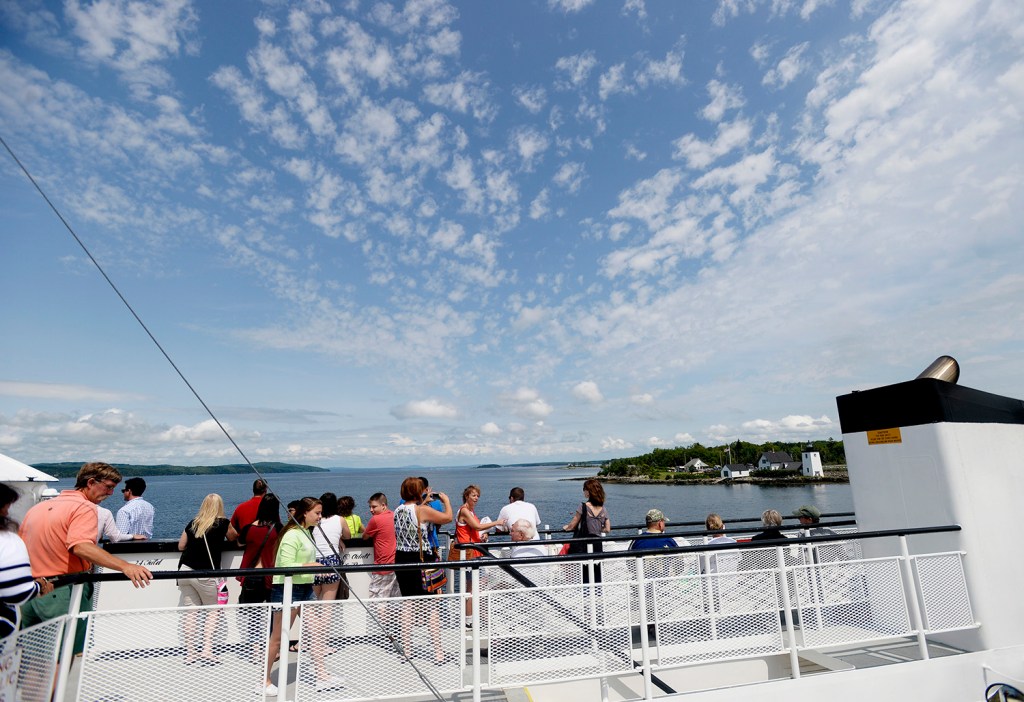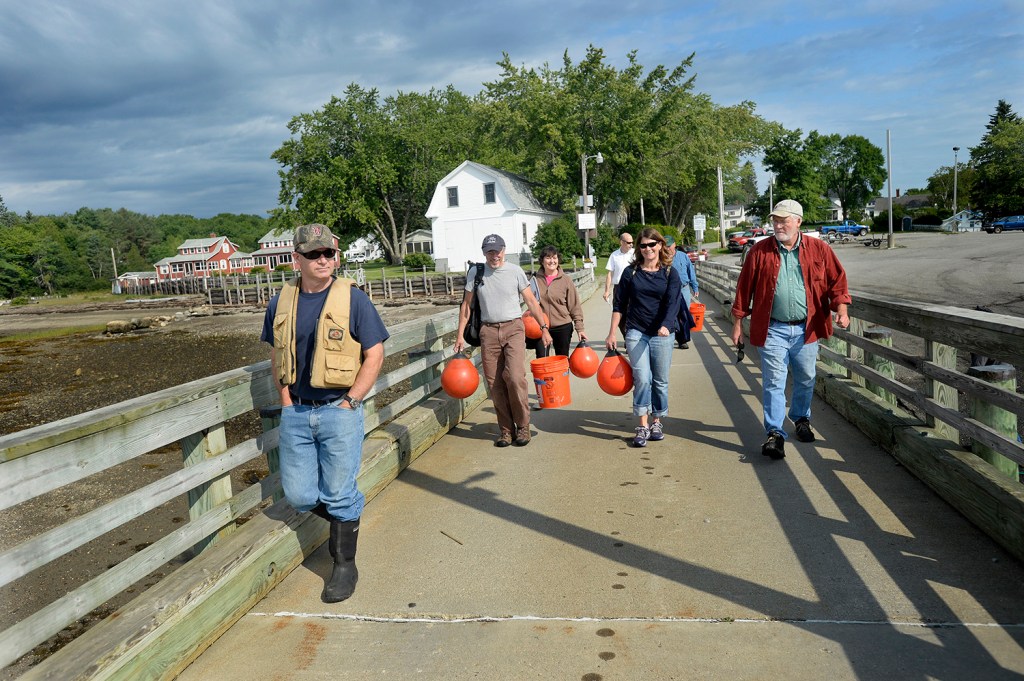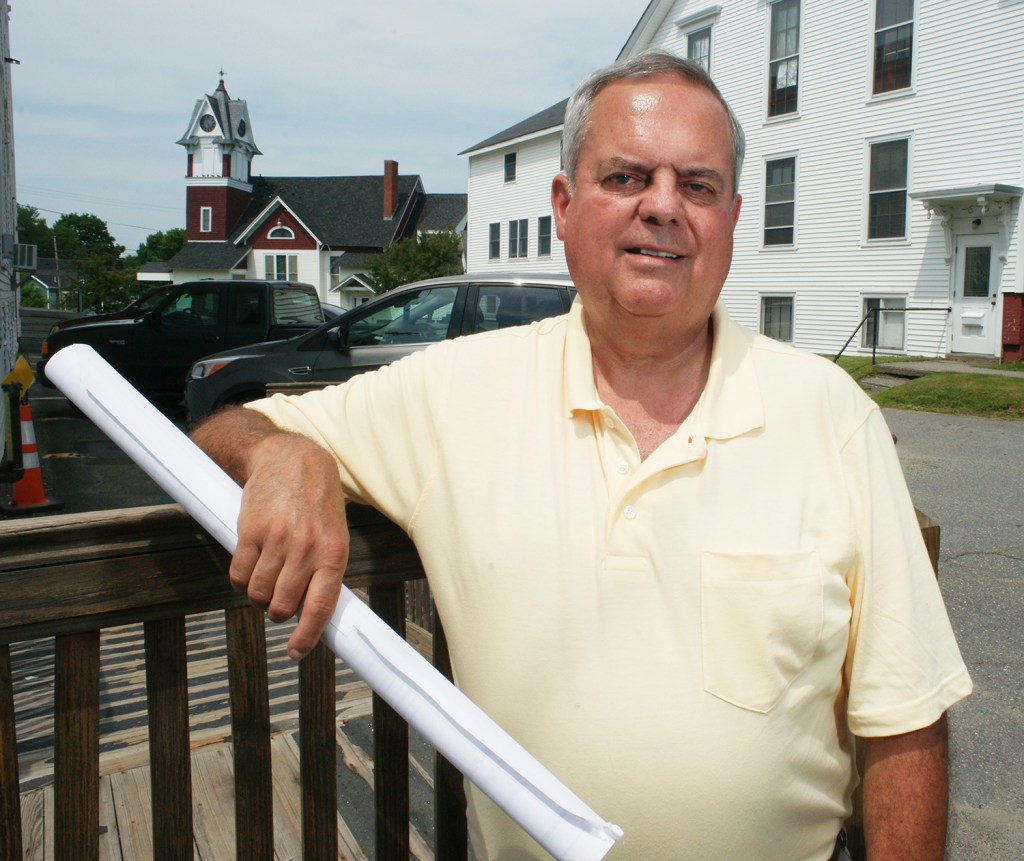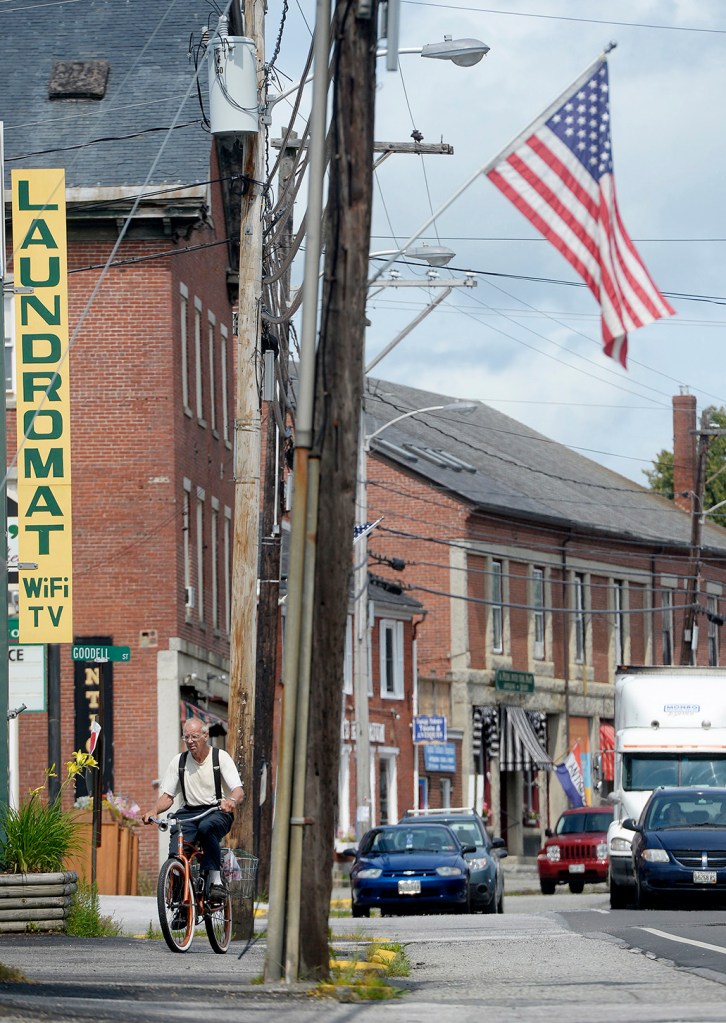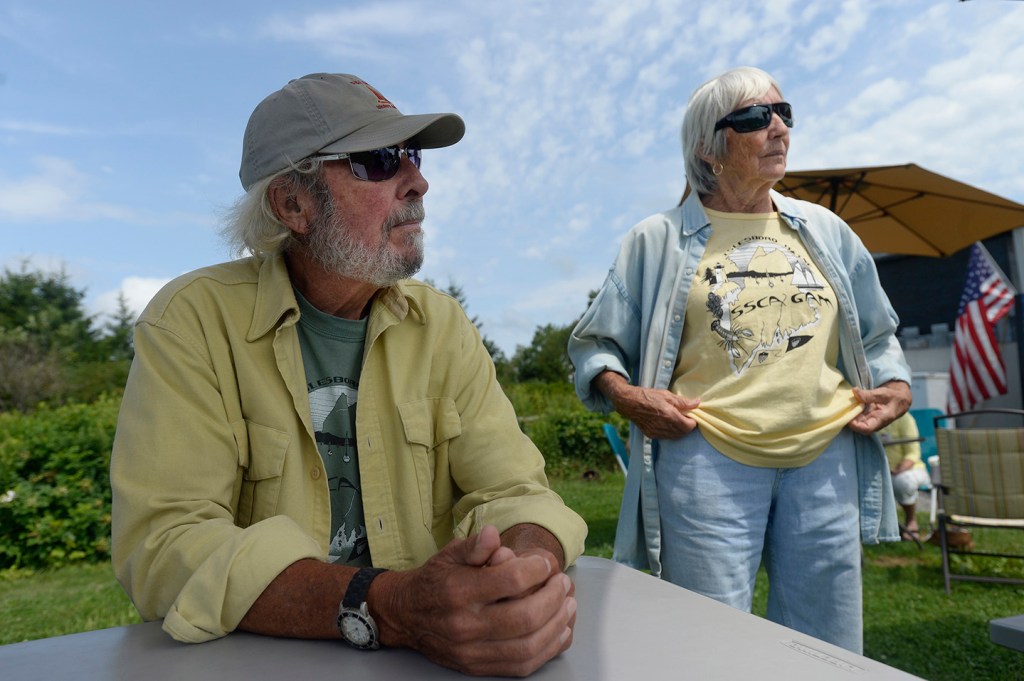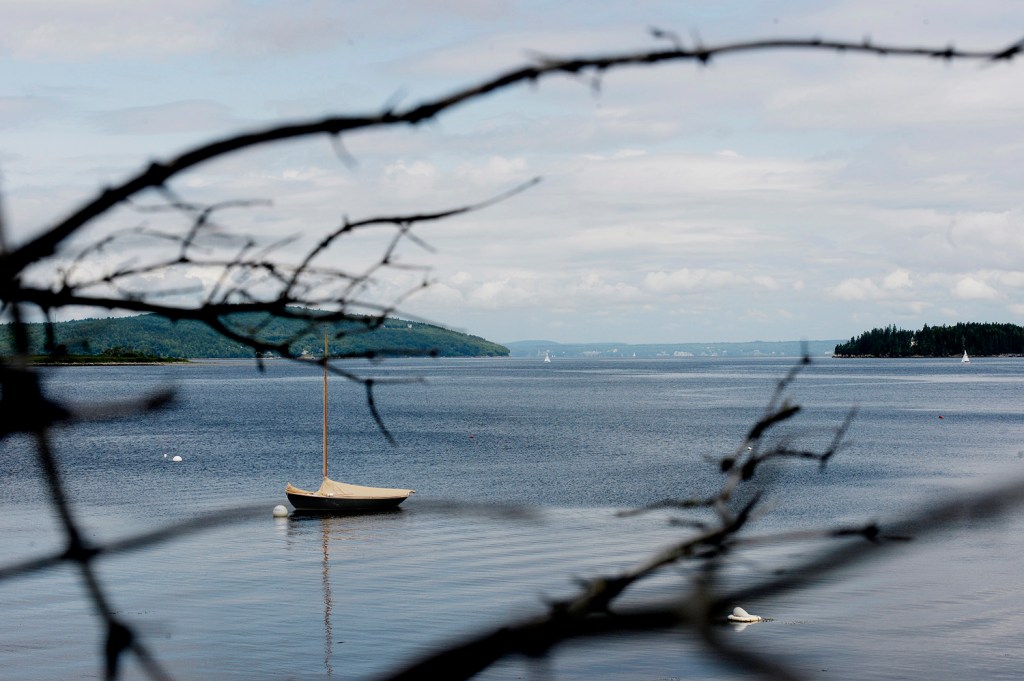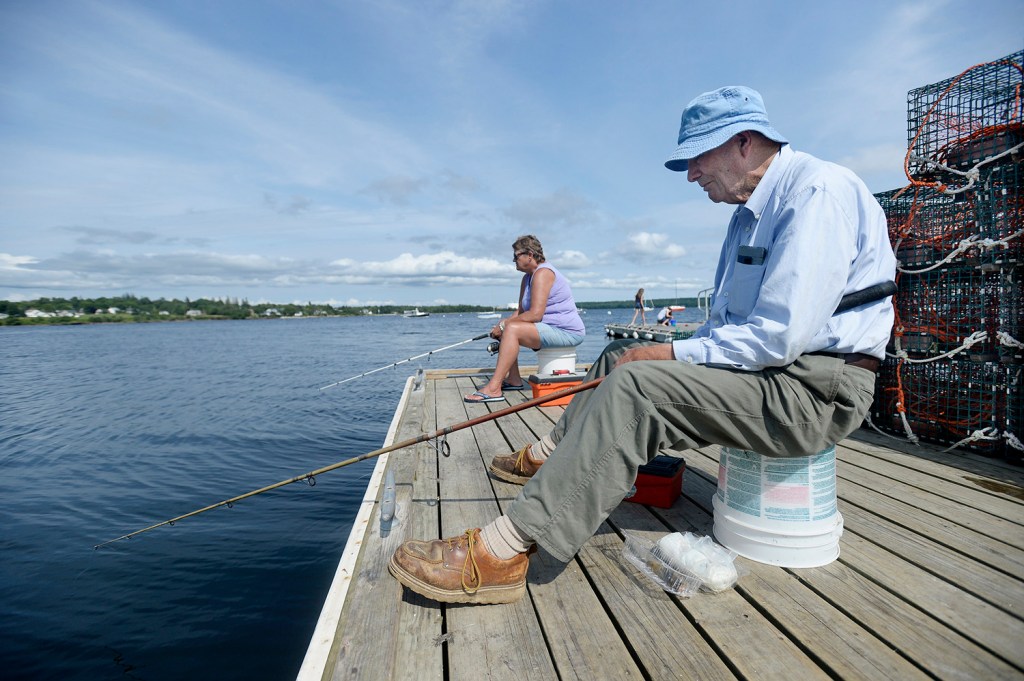MILO — Walking along a forested section of the town’s largely empty business park, David Maynard glances down the railroad tracks toward the Maine coast, some 55 miles away.
A proposal to deepen the shipping channel in Searsport would bring good-paying jobs to Milo and other towns in Maine’s economically depressed interior, he says. Those rails could transport wood products to Searsport, where they would be loaded onto ships bound for customers in Europe, he says.
“The railroad connection to Searsport is a very big part of what gives Milo opportunity and hope for the future,” says Maynard, the town manager.
Maynard’s views are shared by officials in Limestone and Millinocket, which also are linked by rail to Searsport and where companies have discussed building plants that would use Searsport to import supplies and export products.
In the midcoast, though, where the economy is built on the lobster fishery and tourism, the $12 million dredging project is a source of worry. More than 900,000 cubic yards of sediment would be dug up and dumped in Penobscot Bay just southwest of Turtle Head on Islesboro, a pastoral island that has hosted an elite summer colony since the Gilded Age.
Opponents of the project say it could unearth mercury, a legacy of a chemical plant that once operated upriver in Orrington, pollute the bay and wreak havoc on the thriving lobster fishery.
“We think the project that is being proposed has the potential for too much damage,” says Charles Verrill, president of the Isleboro Island Trust, which has hired a Washington, D.C., lobbying and consulting firm to review the project.
NO DREDGING DONE FOR 50 YEARS
A lot is at stake here: the future of Maine’s second-busiest port, the economic prospects of communities in some of the poorest regions of the state and the ecological health of Penobscot Bay, which is both a destination for tourists and one of the most productive fishing grounds for the state’s $365 million lobster industry.
Under the direction of the Army Corps of Engineers and the Maine Department of Transportation, the dredge is expected to deepen the port’s entrance channel from 35 feet at mean low water to 40 feet. In addition, the channel would be widened from 500 feet at its narrowest to 650 feet.
The Searsport channel hasn’t been dredged in 50 years, and it needs to be deeper so the port can serve the larger double-hulled vessels that are standard now but didn’t exist 50 years ago, says Capt. David Gelinas of the Penobscot Bay & River Pilots.
“It’s a lot more than a ditch in the mud,” he says of the channel. “It’s like a bridge that connects the port with the rest of the world.”
STAY COMPETITIVE, ADD MARKETS
With 84 ships calling there last year, Searsport Harbor is the busiest port north of Portland. The eastern side of the harbor, known as Mack Point, has two piers: a state-owned pier that handles dry cargo, and a pier owned by Sprague Resources that handles liquid cargo for Sprague and for Irving Oil.
Imports account for nearly all of the port’s traffic. Most of the cargo is petroleum: gasoline, diesel and heating oil. Other cargo includes asphalt, caustic soda, road salt, clay slurry for the paper industry, as well as slag, gypsum and iron oxide for Dragon Cement in Thomaston. Wind turbines and transformers are also delivered through the port.
The gasoline that Irving imports from Canada is distributed throughout Maine. Last winter, the salt delivered to Searsport was reloaded onto a barge and hauled to New Jersey.
If the channel is not deepened to 40 feet, Searsport will lose business as shippers find other ways to move cargo, such as by truck, says John Henshaw, executive director of the Maine Port Authority. Per ton of cargo, ships are the most environmentally friendly way to transport goods, he says.
It’s critical that the port remains competitive because access to a port lowers transportation costs for Maine companies and consumers, he says.
Henshaw also points to the growing market in Europe for wood pellets because of new carbon-mitigation policies. Proposals to build wood pellet plants in Milo and Millinocket are viable only if the port can serve larger vessels, he says. For a low-value product like wood pellets, large vessels are important because they lower transportation costs by delivering in bulk.
“The transportation costs would make or break that business,” says Henshaw.
PELLET POTENTIAL IN TWO TOWNS
That observation is felt keenly in Milo, where investors have told town officials that they want to build a pellet factory in Milo’s business park. But the project won’t happen unless Searsport is dredged, says Maynard, the Milo town manager.
The same is true in Millinocket, which also is linked to Searsport by rail. Cate Street Capital, a New Hampshire-based private equity firm, has been trying to raise money to build a $140 million wood pellet plant on the site of a former paper mill. Dredging a deeper channel in Searsport is critical to the town’s ability to attract investment, says Peggy Daigle, the town manager in Millinocket.
“Better access to shipping ports is going to be crucial to hanging on to what little we have,” she says.
Even officials in Aroostook County, where until the 1960s farmers used the port to ship potatoes to Europe, have a stake in the dredging. Maine’s largest county is linked to Searsport on sections of the former Bangor & Aroostook Railroad, now part of the Central Maine & Quebec Railway and the Maine Northern Railway.
Officials in The County see the rail-port link as essential to its future development. A Chinese company, NORINCO, is considering building a rail car manufacturing operation at the former Loring Air Force Base in Limestone. The company, which plans to ship steel components to Maine through Searsport and then transfer them to its facility by rail, won’t proceed unless it knows that Searsport will be dredged, said Carl Flora, president and CEO of the Loring Development Authority of Maine.
The state over the years has spent millions of dollars preserving Maine’s freight rail system, Flora says, but that system won’t be worth much unless it also connects with an efficient port.
BACKERS, AND FOES, IN BANGOR AREA
Support for the dredging project is particularly strong in Bangor. In a letter sent in February to the Army Corps of Engineers, the Action Committee of Fifty business group warns that the project’s opponents have an “ulterior motive” to limit or shut down commercial use of Searsport.
Without the access that the port provides to national and international markets, interior Maine will continue to lose jobs and population, according to the group’s letter, which was signed by 138 business people.
Gov. Paul LePage’s administration has been pushing hard for this “relatively small” and routine project because of the statewide implications for the economy, explained Department of Transportation Commissioner David Bernhardt in a February letter to Penobscot Bay lawmakers who oppose the project.
“This affects all of us,” he wrote. “If you have driven in winter on a Maine road that requires salt, worked at or with a central or northern Maine mill, heated with oil, or supported the diversification of Maine’s energy mix to include wind power, you rely on the Port of Searsport.”
FOES CITE ENVIRONMENTAL IMPACT
While coastal residents acknowledge that the dredging project could help communities inland, the opposition by residents along Penobscot Bay appears to be broad and intense. Ten communities, 30 midcoast legislators and groups representing local lobstermen have asked the Army Crops of Engineers to prepare an Environmental Impact Statement to provide answers about the ecological effects of the project and consider alternatives to the existing plan.
The Army Corps of Engineers has yet to decide if an Environmental Impact Statement is needed, says Tim Dugan, spokesman for the agency in New England. However, he is not aware of the agency authorizing such a study for any dredging project nationally. They are rare, he says, because they add millions of dollars in costs, take multiple years to complete and are intended for groundbreaking projects, such as the Cape Wind development in Massachusetts, the first offshore wind farm in the United States. The environmental review for that project took 10 years, he said.
Dugan says the scale and intensity of the opposition to the Searsport project are unusual, and that communities typically push hard for Congress to fund these projects because they support economic development.
But along Penobscot Bay, people are worried about mercury contamination upriver and the effects of dumping contaminated material in the bay. Lobstermen worry that the potential contamination could lead to closures and damage the fishery’s reputation in the marketplace.
Others see the goal of the project – allowing larger ships to use the harbor – as a reason to oppose it, saying the industrial use is incompatible with sailing, fishing and tourism.
“We have summer people,” explains Sara Babbidge, a trustee of Isleboro Island Trust, who works as a caretaker on a 150-acre estate owned by a family from Montreal. “They are not going to be able to use the beautiful bay when there are big cargo ships coming in. They want to be able to use the bay for sailing activities. It is known as one of the most beautiful sailing areas in the world.”
Verrill, who heads the land trust, says he is sympathetic to the jobs argument made by people in interior Maine who support dredging. But the international trade attorney, who lives most of the year in Washington, D.C., says Maine needs to move beyond the old industrial jobs of the past.
“I would prefer some development more in line with Maine character, more like farming and craft beer,” he says.
SEDIMENT WORRIES LOBSTERMEN
Lobstermen typically support dredging projects, but Penobscot Bay lobstermen are fighting this one. The two lobster councils that represent the 2,100 fishermen who work in the area, from Pemaquid Point in Bristol to Newbury Neck in Surry, voted to oppose the project, as did Local 207 of the Maine Lobstering Union. Last year, fishermen in those two zones landed $166 million worth of lobsters, accounting for nearly half of the total value of lobsters caught in the state.
David Black, a Belfast lobsterman who has been fishing in the bay for 50 years, says lobstermen are most concerned about where the sediment from the dredging will be dumped. He says the Army Corps of Engineers chose a dump site near Isleboro that is convenient for the agency because it’s less than four miles from the shipping channel.
That could be disastrous for lobster habitat, Black says.
“It’s going to smother everything in that area,” and it could take years to recover from it, he says. A better dump site, he says, is 38 miles away between North Haven and Rockland.
According to the Army Corps of Engineers, though, the additional distance would add a huge expense. The tugboats pulling the dump scows would have to work an additional 63 days and burn 260,000 more gallons of diesel fuel, adding $7 million to the project cost.
ALTERNATE CUTS AMOUNT DREDGED
Many opponents say they are not opposed to dredging per se, just the large scale of the project.
They support what’s called a maintenance dredge, which would remove about 37,000 cubic yards – rather than the 929,000 cubic yards proposed by the Army Corps of Engineers – and return the channel to the 35-foot depth it was when last dredged in 1964. The channel now is at 33 feet.
Currently, only a dozen ships a year destined for Searsport are large enough to benefit from the larger dredge, says Robert Vining, a Dawson & Associates consultant working for Isleboro Island Trust and who formerly headed the civil works programs in the management division of the Army Corps of Engineers.
Vining says ships with drafts of 42 feet could still access the port if the channel was maintained at a depth of 35 feet and the depths at the berths were dredged to 45 feet. That kind of dredge project would require the removal of much less material from the bottom of the bay. The only limitation would be that those ships would have to enter the channel at high tide, says Vining.
“From our standpoint, you would achieve most of the benefits without any of the economic costs or the environmental impacts of the channel deepening,” he says.
PORTLAND DREDGING NOT A MODEL?
The Maine Lobstermen’s Association is staying out of the fight, except to assure that lobstermen get the most accurate information possible, says Executive Director Patrice McCarron. She noted that there was little opposition among lobstermen this winter when the Army Corps of Engineers dredged Portland Harbor after first trapping and removing all the lobsters in the harbor, a practice that will likely be replicated for the Searsport project. Army Corps of Engineers studies have shown that the lobster population in the Cape Elizabeth disposal site recovered quickly, McCarron says, and that lobstermen with traps in the area have reported excellent fishing.
Although the same environmental protection standards used in Portland also will be applied to the Searsport project, she says Penobscot Bay fishermen remain skeptical.
They “are not interested in the experience of the Portland fishermen,” she says. “They feel they have their own concerns based on where they fish.”
Michael Hutchings, a Lincolnville lobsterman who sits on the Zone D Lobster Council, underscores her point. He has attended several meetings in which officials from the Army Corps of Engineers have tried to assure lobstermen that the project won’t harm their livelihoods.
“Most people don’t believe them,” he says. “Nobody has a lot of confidence in the government as far as them telling the truth anymore.”
Send questions/comments to the editors.


